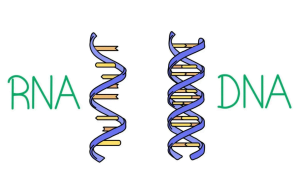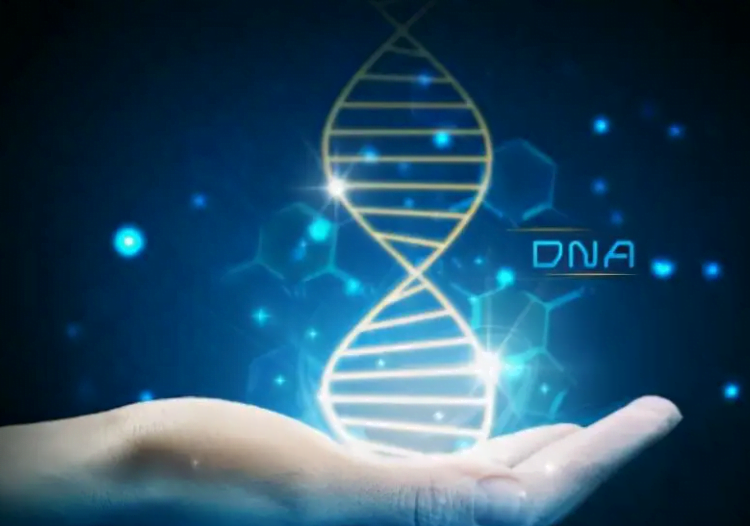Have you ever wondered how scientists study the microscopic building blocks of life? The journey begins with a crucial process: DNA and RNA extraction. This technique has evolved over decades, allowing researchers to delve into the mysteries of our genetic code. In this article, we will explore the captivating history and advancements in this field!
What are DNA and RNA?
Before diving into DNA and RNA extraction, let’s first understand these biomolecules. DNA (deoxyribonucleic acid) is the genetic material that carries instructions for the development and functioning of living organisms. It is a double-stranded molecule that looks like a twisted ladder.
On the other hand, RNA (ribonucleic acid) is a single-stranded molecule that plays a vital role in making proteins from the instructions in DNA. Both DNA and RNA are made up of smaller units called nucleotides.
What is DNA and RNA extraction?
DNA and RNA extraction separates and purifies these biomolecules from biological sources like cells, tissues, or entire organisms.
It involves breaking open the cells and removing unwanted components like proteins, lipids, and other cellular debris, leaving behind only the DNA or RNA.
This process is crucial because it provides researchers with pure DNA and RNA samples that can be used for various purposes, such as studying genes, diagnosing diseases, or even creating new treatments.

Why is extracting DNA and RNA important?
Extracting high-quality DNA and RNA is vital for many scientific and medical applications. Here are some reasons why it is so important:
- Genetic research: DNA and RNA samples are essential for studying genes and understanding how they work and contribute to different traits and diseases.
- Forensics: DNA extracted from crime scene evidence can help identify suspects or victims and can even be used to solve cold cases.
- Disease diagnosis: Analyzing DNA and RNA from patients can help diagnose genetic disorders, cancer, and other diseases.
- Personalized medicine: By studying a person’s DNA and RNA, doctors can develop personalized treatments tailored to their unique genetic makeup.
- Environmental studies: Extracting DNA and RNA from environmental samples can help researchers study the diversity of life in different ecosystems and monitor the impact of human activities on the environment.
- Biotechnology: Pure DNA and RNA samples are essential for developing new biotechnological products, such as genetically modified crops or biological drugs.
How were DNA and RNA extracted in the past?
In the early days of molecular biology, extracting DNA and RNA was challenging and time-consuming. One of the earliest methods, developed in the late 1800s by Friedrich Miescher, involved separating DNA from the nuclei of white blood cells using harsh chemicals like acid and alkali.
In the mid-1900s, researchers like Meselson and Stahl introduced techniques like density gradient centrifugation, which used heavy solutions to separate DNA molecules based on weight. This method, while effective, was extremely laborious and required specialized equipment.
Another popular method was the phenol-chloroform extraction, which used toxic organic solvents like phenol and chloroform to separate DNA and RNA from other cellular components. This technique was widely used but had the drawback of being hazardous and generating a lot of chemical waste.
For extracting RNA, a common method was the guanidinium thiocyanate-phenol-chloroform extraction, which involved using a chemical called guanidinium thiocyanate to break down cells and separate RNA from DNA and proteins.
While these early methods were groundbreaking, they were often complex, time-consuming, and involved hazardous chemicals, making them less than ideal for modern research and applications.
How has DNA and RNA extraction technology improved over time?
As the importance of DNA and RNA research grew, scientists and companies worked to develop better and more efficient extraction methods. One of the major improvements was the introduction of solid-phase extraction techniques.
These methods use specialized materials like silica, glass particles, or magnetic beads to selectively bind and purify DNA and RNA. This simplified the process and eliminated the need for toxic organic solvents.
Another important factor was the development of commercial extraction kits. These user-friendly kits contain all the necessary reagents and columns for extracting DNA or RNA, making the process much more streamlined and consistent.
Automation has also played a significant role in improving DNA and RNA extraction. Automated systems can process multiple samples simultaneously, reducing the risk of human error and increasing efficiency and throughput.
Some of these automated systems use advanced technologies like magnetic bead-based extraction, which uses tiny magnetic particles to capture and purify nucleic acids. Others use microfluidic devices or lab-on-a-chip platforms to perform the entire extraction process on a small, integrated chip.
These modern extraction methods offer several advantages over traditional techniques, including:
- Faster and more efficient workflows
- Higher purity and quality of extracted DNA and RNA
- Ability to process a wider range of sample types
- Increased reproducibility and standardization across different labs
- Reduced exposure to hazardous chemicals
- Integration with downstream analytical techniques like sequencing and gene expression analysis
As technology advances, we can expect even more innovative and powerful DNA and RNA extraction methods to emerge, further accelerating the pace of scientific discovery and medical breakthroughs.

Can DNA and RNA be extracted from ancient or degraded samples?
While modern extraction techniques are incredibly effective, one of the biggest challenges is working with ancient or degraded samples. DNA and RNA are delicate molecules that can break down over time due to heat, moisture, and enzyme exposure.
However, researchers have developed specialized methods for extracting nucleic acids from ancient or degraded samples, such as those found in archaeological sites, fossilized remains, or old forensic evidence.
One approach is to use highly sensitive extraction protocols that can recover even trace amounts of DNA or RNA from these samples. Another technique involves using specialized buffers and enzymes to repair or reassemble fragmented nucleic acid molecules.
While extracting DNA and RNA from ancient or degraded samples is still challenging, these specialized methods have enabled researchers to study the genetic makeup of long-extinct species, unravel the mysteries of human evolution, and even solve cold cases by analyzing decades-old forensic evidence.
What are the prospects of DNA and RNA extraction technology?
The field of DNA and RNA extraction technology is constantly evolving, and the future looks incredibly promising. One exciting prospect is the development of even more miniaturized and portable extraction devices.
Imagine being able to extract DNA or RNA from a sample in the field without transporting it to a laboratory. This could revolutionize environmental monitoring, forensic investigations, and even medical diagnostics in remote or resource-limited settings.
Another area of active research is the integration of DNA and RNA extraction with other analytical techniques, such as next-generation sequencing or gene expression analysis. This could lead to fully automated, end-to-end workflows that streamline the entire process from sample collection to data analysis.
Additionally, researchers are exploring novel materials and technologies, such as nanomaterials or microfluidic devices, to develop even more efficient and sensitive extraction methods.
As our understanding of genetics and molecular biology continues to deepen, the demand for high-quality DNA and RNA samples will only increase. This will drive further advancements in extraction technology, enabling researchers and scientists to unlock new frontiers of knowledge and develop groundbreaking solutions to some of the world’s most pressing challenges.
